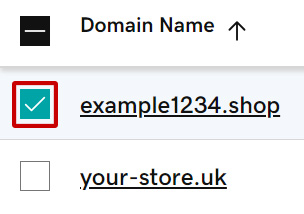How do I renew my expired domain?
This article will explain how you can renew your domain after the expiry date.
Expired domains are domain names that were registered but haven’t been renewed ahead of their expiration date. This can be due to several reasons, such as expired payment details or because the domain wasn’t set to auto-renew.
If a domain isn’t renewed before expiry, that doesn’t always mean it’s lost. In fact, some domain names can still be renewed after expiry. Read on to find out how.
What happens after my domain has expired?
Once a domain expires, it enters a grace period, during which it can still be renewed for the standard renewal price. To renew a domain name during this time, you will need to contact our Support team, who will confirm if your domain is eligible for renewal and help you renew it.
If a domain isn’t renewed during the 'grace period', then it may enter a 'redemption period', in which you’ll have one last chance to renew your domain before it’s released onto the open market. A redemption period is typically up to 18 days long, although this may vary depending on your domain’s extension.
To retrieve a domain from redemption, please contact our Support team. An additional redemption fee + 1-year renewal fee + VAT will apply.
For more details about the grace period, please read the following article: What is the domain recovery period and how can I restore my domain names?
Some domain names will incur a higher charge, plus renewal fee, based on the registry pricing.
How do I renew an expired domain?
To renew a domain name that has expired, simply follow the steps outlined below:
- Start by logging in to your 123 Reg Control Panel.
- Next, select Manage All opposite Domains within the ‘All Products and Services’ section.
You will now see a complete list of your purchased domain names. If you don’t see your expired domain, click Expiration above the list to filter and view expired domains.
Next, select the domain(s) you want to renew by clicking the checkbox next to them.

Click Renew Now in the bar that appears below. If you can’t see this option, click More instead and you will find it within the menu that appears.
A pop-up window will now appear, asking you to select your renewal length (between 1-9 years) and/or turn on auto-renewal. Once you’ve done this, click Continue to Checkout.
- Complete the checkout process to renew your expired domain.
Are there any domains that DON’T have a grace period?
Yes, some domain types, particularly code top-level domains (ccTLDs), may have specific expiration and renewal policies that differ from the typical grace period process. These domains may not offer a grace period at all, or the grace period might be shorter or subject to different rules depending on the registry for that domain extension.
It's important to check the specific renewal policies for your domain extension, as these can vary widely. If you’re unsure about the grace period for your domain, we recommend reaching out to our Support team for assistance.
How long do I need to wait until an expired domain will be available for purchase?
Most expired domain names are removed from your account 72 days after the expiry date. At this point, they can no longer be renewed. You may be able to register the domain once the registry releases it. However, the release timing varies by domain extension, and 123 Reg cannot guarantee when it will become available for registration.
